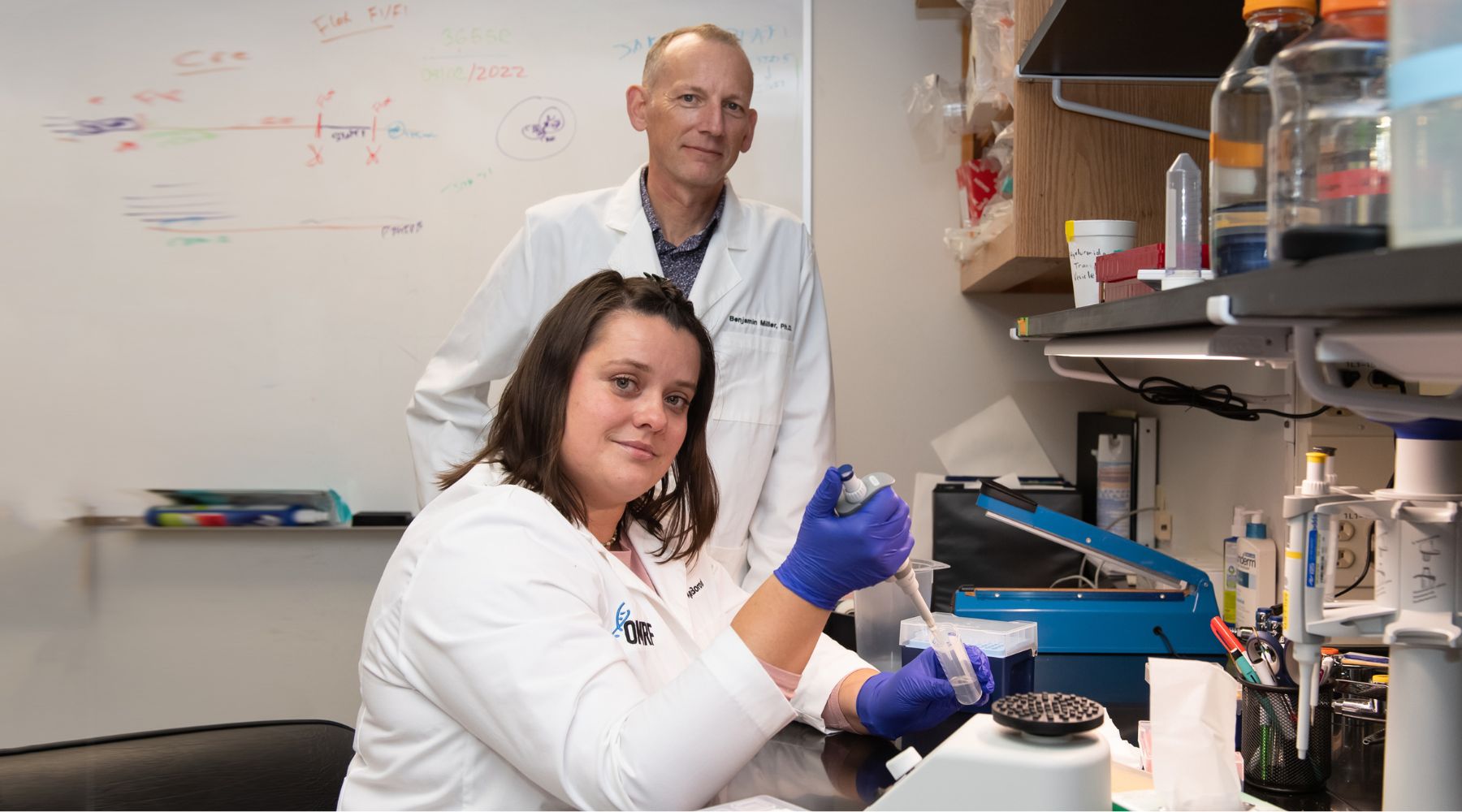A paradigm-shifting discovery at the Oklahoma Medical Research Foundation has opened a new pathway to finding treatments for maintaining and growing muscle mass.
OMRF scientist Aga Borowik, Ph.D., discovered that the nuclei in skeletal muscle cells, called muscle fibers, continue replicating DNA after reaching maturity. The finding counters a tenet held since 1957, when scientists reported that muscle fibers, once mature, no longer make new genetic material.
“This finding gives us a better understanding of what makes skeletal muscle work,” said Borowik, a postdoctoral researcher in the lab of OMRF scientist Benjamin Miller, Ph.D. “It gives us a starting point to develop future therapies for maintaining muscle mass or slowing down atrophy.”
Miller, who leads OMRF’s Aging and Metabolism Research Program, said the discovery is groundbreaking because “if you have more genetic material, in theory, it should allow your muscle to become bigger.”
Most people begin to experience progressive loss of muscle mass and strength in their 30s or 40s. The condition becomes more pronounced after age 65, leaving older people susceptible to falls and difficulty performing daily tasks.
“There’s no pill to prevent this,” Borowik said. “Regular exercise can slow the process, but we know that isn’t realistic for everyone.”
Skeletal muscle makes up 60% to 80% of body mass and is composed primarily of muscle fibers, which are long, tubular cells. Unlike most other cells, which contain a single nucleus, each muscle fiber has hundreds of “myonuclei,” Borowik said.
“Myonuclei act as the control centers of the skeletal muscle cell, but because those cells are so complicated and dynamic, you need a lot of control centers,” she said.
Heart muscle is similar to skeletal muscle, and for decades researchers held a similar dogma about the supposed inability of mature heart muscle cells to produce new genetic material. Borowik said a scientific breakthrough in 2009 changed that understanding, prompting some researchers to begin questioning the dogma concerning muscle fibers.
“Thanks to Dr. Borowik’s careful work, we now know this can happen. We need to study whether we can make it happen more often and increase the potential muscle growth,” Miller said.
His lab will now try to determine whether this process occurs in all muscle fiber nuclei or just within certain groups.
The research was published in Function, the journal of the American Physiology Association. It was funded by grants R21AR077387 and 5T32AG052363-04 from the National Institutes of Health and by Department of Veterans Affairs grant I01BX005592.



